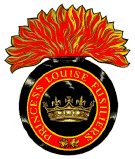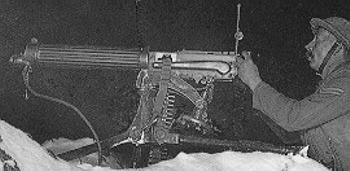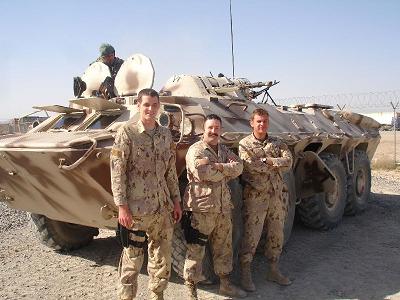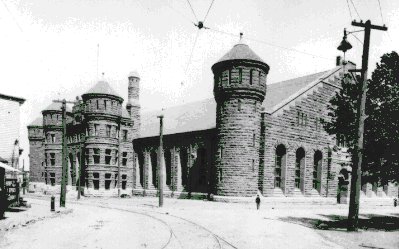
The Princess Louise Fusiliers
For a list of Battle Honours, just click on the cap badge above.
The Princess Louise Fusiliers (PLF) trace their history to the founding of Halifax in 1749. After being reconstituted as part of the Canadian Militia in 1869, the old Halifax Regiment was designated the 66th Battalion "Princess Louise Fusiliers" in 1879. Elements of the 66th saw service in the North-West Rebellion of 1885 and the Boer War in South Africa 1899-1900.

The 66th Princess Louise Fusiliers breaking camp in Aldershot, 1904
Upon the outbreak of World War One, the Regiment was called to active service guarding the defences of Halifax. Throughout this period, the PLF provided over 900 officers and men to the Canadian Expeditionary Force in such units as the 14th, 25th and 64th CEF Battations and the Canadian Machine Gun Corps. During the aftermath of the Halifax Explosion in 1917, the Regiment formed the basis of rescue and restoration efforts and were commended by the government of the day for its actions.

The Vickers Machine Gun was the backbone of the Machine Gun Corps during World War One and the PLF machine gun platoons during World War Two.
The PLF was re-roled as a machine gun unit in 1936 and it was in that role that the Regiment was called to active service in 1939. Assigned as the machine gun support unit for the 11th Canadian Infantry Brigade in 1943, the PLF saw action in the Italian Campaign 1944-1945. Transferred to North-West Europe in January 1945, the Regiment fought in several engagements in Holland and was on the line when hostilities ended.
Here is an account of the PLF in
wartime, written by Maj P.B. Kennedy while still overseas.
Here is the collection of PLF War Diaries, and associated War Diaries of the 11th and 12th Infantry Brigade HQ's under which the PLF served during WW2.
Significant historical locations for the Regiment around the world can be found here.
Returned to the infantry role in 1958, the Regiment had the honour of receiving HRH Princess Margaret as the Colonel-in-Chief. Her address to the parade can be found here. The PLF served through the National Survival period of the 1960's and 1970's and into the period of moderization of the militia. From 1984 to 1989, the PLF had the only reserve NATO operational task to 4 CMBG in Germany, sending soldiers to Europe every fall for exercises.
Members of the PLF have deployed to Golan Heights, Cyprus, Bosnia, Former Yugoslavia, Rwanda, Haiti and Sierra Leone.

PLF members in Afghanistan, with Afghan BTR70 Armoured Car
The PLF sent over 25 members to Afghanistan in 2007 as part of Task Force 1-07, and a number of members have served in Afghanistan both before and after that date. Today, the Regiment continues to train excellent officers, NCOs and soldiers for the Total Force and has contributed significantly to NATO and United Nations operations.

The Halifax Armoury circa 1899
The Regiment's home is the Halifax Armoury. For a brief history
of the building, click the picture above.






